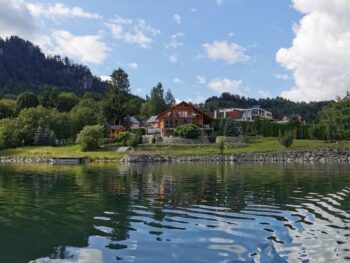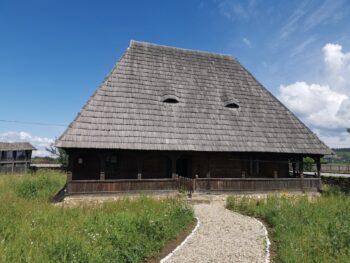NEW AND EMERGING TECHNOLOGIES
European thought leadership in academia and industry
on future enabling technologies
and their transformational potential
in industrial, societal and environmental terms
INCDCP-ICECHIM responds to the technological and societal challenges of the 21st century by substantiating and developing new and emerging technologies, resulting from multidisciplinary collaborations, aiming at transforming the latest results of scientific research into globally competitive economic advantages. “New and emerging technologies” represents the main driver of INCDCP-ICECHIM’s development philosophy and the throttle of the 2019-2022 Core program addressing this field (Advanced chemistry for innovative and emerging technologies).
The innovative technologies developed by engaging national and international collaborations academic and industrial stakeholders have been articulated through RDI projects, for various applications, respectively:
- Reduction of contaminants in wastewater;
- Depollution of radioactive liquid wastes;
- Depollution of aqueous effluents containing organic and inorganic pollutants;
- Conditioning of liquid organic wastes;
- Photocatalysis of various chemical species;
- Elaboration of multispectral camouflages using new specific chromogen-polymeric pigments;
- Obtaining nanomaterials with antimicrobial, antifungal and antioxidant properties by green chemistry methods and their application to reduce biocenotic stress in horticultural crops;
- Reduction of greenhouse gases through microalgal photosynthesis;
- Assessment of greenhouse gas emissions and adsorption;
- Protection and enhancement of cultural heritage using nanotechnologies or nuclear technologies, digital reconstruction techniques and satellite techniques;
- Monitoring – investigation – diagnosis (archaeometry) of various objects and objectives belonging to the cultural heritage;
- Consolidation / conservation / restoration of the movable and immovable cultural heritage components;
- Photochemical / anti-wear / microbiological protection in museums and art collections storage spaces;
- Obtaining surfaces with self-cleaning properties (technical textiles, architectural coatings) and anti-reflection (solar concentrators) 3D and 4D printing using original materials;
- Development of thermochromic systems for energy saving, luminophore materials, chromogenic materials with colour change to different stimuli (signalling-warning or safety);
- Obtaining construction materials with special properties or innovative antimicrobial materials;
- Obtaining (nano) composites based on biopolymers and 2d structures (for car parts, which reduce the weight of the car, fuel consumption and co₂ emissions).
International projects
INNOVATIVE FULLERENOL – HYDROGELS BASED NANOMATERIALS FOR HEALTH DIAGNOSTIC AND CARE APPLICATIONS – FULSENS-GEL
The main objective of the project consists in the development of an innovative nanomaterial, based on combination of the elastic, flexible and resistant hydrogels with functional nanomaterials based on fullerenols
Danube WATER integrated management
The strategic project “Danube Water Integrated Management” was implemented in the period 2012-2015 and was financed under the Romania-Bulgaria Cross Border Cooperation Programme 2007-2013.
National projects
3D technologies and experimental solutions for cultural heritage diagnosis and preservation
3D technologies and experimental solutions for cultural heritage diagnosis and preservation
BIOGENIC AMINES DETECTION IN FOOD BASED ON AN INNOVATIVE OPTO-ELECTROSENSITIVE PLATFORM
Scopul principal al proiectului îl constituie dezvoltarea unor platforme opto-electrosensibile, miniaturizate, rentabile și robuste bazate pe un nanomaterial inovator pentru determinarea specifică și sensibilă a aminelor biogene (BAs) din alimente
Innovative multifunctional composites for the protection of cultural heritage objects
The InHeritage project aims to develop new multilayer composite materials with multiple functions (consolidation, self-cleaning and antimicrobial) applicable for the preservation of various inorganic substrates.
Integrated technology for advanced removal of heavy metals and arsenic from complex matrices using adsorbent nanomaterials
The aim of the project is the transfer and development of a depollution technology for water with high concentrations of heavy metals and arsenic found in a complex polluting matrix to an economic agent with experience in environmental protection
Through nanotechnology towards the next generation dental restorative materials
The main goal of the NanoDent project is to propose a potential dental restorative material with simultaneous antibacterial properties and enhanced mechanical strength.
Evaluation of the exploatation potential potential of porous materials in the treatment of microbiotarelated diseasss
The scope of the current project proposal is to develop novel micro- and mesoporous materials using modern synthesis methods and to functionalize these materials as drug delivery systems.
Green technology for pharmaceuticals removal from water using eco-friendly oxidation catalysts
This project proposes a new and innovative class of ozonation catalysts with a morphology that assures an easy contact of ozone and pollutants with solid surface (thin-films) and green and cheaper technology for catalyst preparation.
Treatment of water from sources contaminated with nitrates and chlorinated organic compounds using integrated catalytic reduction / oxidation and biofiltration processes
The aim of the project is the transfer and development of a technology for water depollution from sources contaminated with nitrates and chlorinated organic compounds (pesticides and their degradation products), efficient and economically feasible
AI & Earth Observation based services for cultural heritage monitoring
AIRFARE aims to integrate several advanced techniques, such as artificial intelligence / machine learning (AI / ML), with change detection techniques based on Earth observation (EO) data from multiple sensors.
Complex multidisciplinary project for monitoring, conservation, protection and promotion of the Romanian cultural heritage
The RO-CHER project proposes an innovative multidisciplinary methodology that integrates high-level scientific expertise for the safeguarding of cultural heritage.
Nanotechnology – innovative approach with the development of materials and techniques for safeguarding cultural heritage
The aim of the project is to provide practical solutions based on new antifungal recipes, to reduce the impact of biodegradation of objects and objectives belonging to cultural heritage.
Integrated management (conservation, restoration, protection) of cultural heritage objectives
The project aims to meet conservators / restorers demands as an aid measure, both by proposing useful measures / strategies in this field, and by the integrated use of techniques developed on the basis of exact sciences.
Promoting cultural heritage using current digital reconstruction technologies
Digital reconstruction presents known theoretical and practical aspects, being today a consecrated term in the field of conservation and restoration of cultural and historical heritage.
Development of plant extracts and innovative phytosynthesized nanostructures mixtures with phytotherapeutic applications in order to reduce biocenotic stress in horticultural crops
In recent decades, in the scientific field of nanotechnology there has been a high interest in obtaining and characterizing nanometric architectures obtained by the methods of “green chemistry”.
Innovative methods and techniques for evaluating conservation-restoration interventions and monitoring the conservation of traditional constructions in Romania
In Romania there is an extremely wide and valuable patrimony of traditional constructions and installations of popular technique.
Determining the methodology and coefficients specific to Romania in order to quantify GHG emissions and absorbtions for the quantification of climate change
Updating and developing the components of the National GHG Emission and Absorption Assessment System and developing a strategy for the implementation of the Paris Agreement.
Techniques for storing and capitalizing on the results of advanced scientific research (SoVaReX)
The project responds to the need to promote the results of advanced research to raise their value by the business community, local public administration and other potential end users.
Depollution of water containing hardly biodegradable organic compounds (endocrine disruptors) by advanced oxidation processes using innovative catalysts (OXYDEP)
Endocrine disruptors (ECDs) are synthetic chemicals that mimic the function of hormones and, once in the body, alter the hormonal balance.
Innovative apatitic materials with enhanced antimicrobial activity for building materials and cultural heritage conservation
The project proposes the use of metal-doped hydroxyapatite as an antimicrobial component in construction materials.
Innovative ferrite / beta-cyclodextrin core-shell nanocomposites for the removal of organic and inorganic pollutants from aqueous effluents
This project proposes a new and innovative class of nanoadsorbents with core-shell morphology, obtained from ferrite particles (core) and cyclodextrin molecules (shell).
New generation of photocatalytic self-cleaning systems for functionalization of technical textiles and architectural coatings
The objective of the project is to obtain stable, adherent, efficient and durable daylight photocatalytic self cleaning coatings for different types of substrates, such as flexible technical textiles and rigid construction structures.
Avant-garde design of nanomaterials and nanosystems with practical applications in the scientific preservation of Romanian cultural heritage
The project aims to develop and / or optimize methods for the restoration and conservation of cultural assets, through the use of nanomaterials.
Thermosensitive energy saving systems with tailored solar reflecting/absorbing properties for construction structures – THERMOSOLAR
Combining the features of termotropic hydrogels and thermochromic dyes we can obtain complex thermosensitive systems that respond to an increase in temperature by switching the color hypsochromically.


























